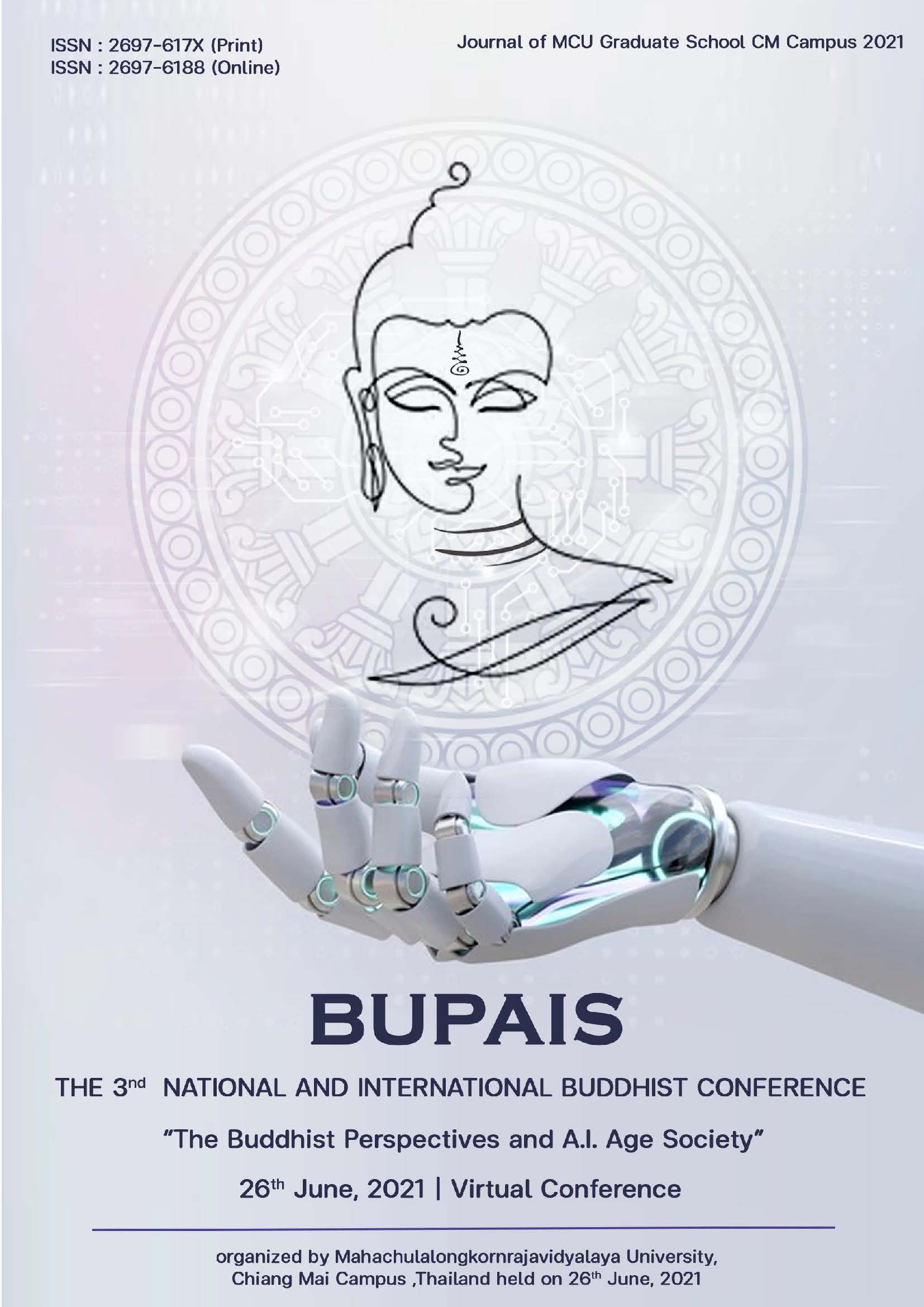การตรวจชำระและศึกษาหลักธรรมในคัมภีร์สืบชาตาฉบับพระครูประโชติสิริวัฒน์
บทคัดย่อ
การวิจัยเรื่อง “การตรวจชำระและศึกษาหลักธรรมในคัมภีร์สืบชาตาฉบับพระครูประโชติสิริวัฒน์” มี 3 วัตถุประสงค์ คือ 1) ศึกษาประวัติความเป็นมาและความเชื่อเกี่ยวกับพิธีกรรมสืบชาตาในสังคมล้านนา 2) ตรวจและชำระคัมภีร์สรากริวิชชาสูตรและคัมภีร์ทิพย์มนต์หลวงสืบชาตาฉบับพระครูประโชติสิริวัฒน์ และ 3) ศึกษาหลักธรรมในคัมภีร์สรากริวิชชาสูตรและคัมภีร์ทิพย์มนต์หลวงสืบชาตา การวิจัยนี้เป็นการวิจัยเชิงเอกสาร โดยศึกษาประวัติความเป็นมา ความเชื่อเกี่ยวกับพิธีกรรมสืบชาตา การตรวจชำระ และศึกษาหลักธรรมในคัมภีร์ดังกล่าว ผลการวิจัยพบว่า
- พิธีกรรมสืบชาตาเป็นพิธีกรรมหนึ่งที่มีอิทธิพลต่อวิถีชีวิตของประชาชนในสังคมล้านนาอย่างยาวนาน เป็นพิธีกรรมเกี่ยวกับมงคลที่เสริมสร้างขวัญกำลังใจแก่บุคคลทั่วไปในวาระโอกาสต่าง ๆ เช่น งานที่เป็นสิริมงคล หรือแม้กระทั่งผู้ป่วยโดยนำมาจากความเชื่อทางพระพุทธศาสนาที่ว่าด้วยเรื่องเกี่ยวกับ “อายุวัฒนกุมาร” เมื่อครั้งยังเป็นทารก ถูกทำนายว่าจะมีชีวิตอยู่ได้ไม่เกิน 7 วัน ด้วยความรักของพ่อแม่ที่มีต่อลูก จึงได้นำทารกไปเข้าเฝ้าพระพุทธเจ้า พระพุทธองค์ทรงรับรู้ด้วยญาณ จึงตรัสรับสั่งให้พระสงฆ์เตรียมสถานที่ และทรงเป็นประธานในการสวดพระปริตร ใช้เวลาในการสวน 7 วัน เพื่อขจัดปัดเป่าอันตรายที่จะเกิดขึ้นกับทารก ภายหลังทารกดังกล่าวจึงมีอายุยาวนานถึง 120 ปี พิธีกรรมสืบชาตาถูกนำมาประยุกต์ให้เข้ากับสังคมร่วมสมัยมากขึ้น เช่น พิธีกรรมสืบชาตาเมือง พิธีกรรมสืบชาตาแม่น้ำ และพิธีกรรมสืบชาตาป่าไหม้ ดังที่ปรากฏในสังคมปัจจุบัน
- การตรวจและชำระคัมภีร์สรากริวิชาสูตรและคัมภีร์ทิพย์มนต์หลวงสืบชาตาฉบับของพระครูประโชติสิริวัฒน์ทั้ง 5 คัมภีร์ พบว่า การเขียนแบ่งออกเป็น 2 รูปแบบ รูปแบบที่หนึ่ง คือ เป็นการเขียนตามสำเนียงของภาษาพื้นเมือง ทำให้การออกเสียงผิดเพี้ยนไปบ้างรูปแบบที่เขียนด้วยภาษาบาลี รูปแบบที่สอง เป็นการแต่งประโยคและศัพท์อักขระที่ผิดจากไวยากรณ์ของภาษาบาลี ทำให้ไม่สามารถตีความหมายของประโยค หรือเนื้องหาได้ ก็ยังคงรูปเดิมไว้ ส่วนประโยคไหนที่ที่มีความผิดพลาดเล็กน้อย และสามารถตีความหมายได้ ก็ได้ตรวจชำระให้ได้ใจความสมบูรณ์ถูกต้องตามหลักไวยากรณ์ภาษาบาลี
- หลักธรรมที่ปรากฏในคัมภีร์สืบชาตา พบว่า มีหลักคารวธรรม 6 ที่ว่าด้วยการเคารพนบน้อมพระพุทธเจ้า พระธรรม พระสงฆ์ ในศีล ในความไม่ประมาท และมีใจเอื้อเฟื้อต่อเพื่อนมนุษย์ หลักโพชฌงค์ 7 มี สติ ธรรมวิจยะ วิริยะ ปีติ ปัสสัทธิ สมาธิ และอุเบกขา หลักการสร้างบารมีของพระโพธิสัตย์ หรือเรียกว่าบารมี 30 ทัด มีทานบรมี สีลบารมี เนขัมมบารมี ปัญญาบารมี วิริยบารมี ขันติบารมี สัจจะบารมี อธิษฐานบารมี เมตตาบารมี และอุเบกขาบารมี โดยแบ่งระดับของบารมีออกเป็น 3 ระดับ คือ ระดับต้น เรียกว่าบารมี ระดับกลาง เรียกว่า อุปบารมี และระดับสูง เรียกว่า ปรมัตถบารมี และหลักเมตตาภาวนา 3 ที่กล่าวถึงการแผ่เมตตาแบบเจาะจง การแผ่เมตตาแบบไม่เจาะจง และการแผ่เมตตาไปในทิศทั้ง 10
บรรณานุกรม
พระพรหมคุณาภรณ์ (ป.อ.ปยุตฺโต). (2557). พจนานุกรมพุทธศาสตร์ ฉบับประมวลธรรม. พิมพ์ครั้งที่ 27. กรุงเทพมหานคร: มหาวิทยาลัยมหาจุฬาลงกรณราชวิทยาลัย.
หอสมุดแห่งชาติรัชมังคลาภิเษก. (2527). ล้านนาไทย อนุสรณ์พระราชพิธีเปิดพระบรมราชานุสาวรีย์สามกษัตริย์. เชียงใหม่: ทิพย์เนตรการพิมพ์.
เอมอร ชิตตโสภณ. (2533). ความสัมพันธ์ระหว่างวรรณกรรมล้านนากับวรรณกรรมประจำชาติ. เชียงใหม่: ธนบรรณาการพิมพ์.

